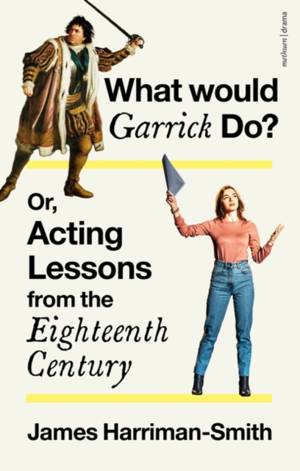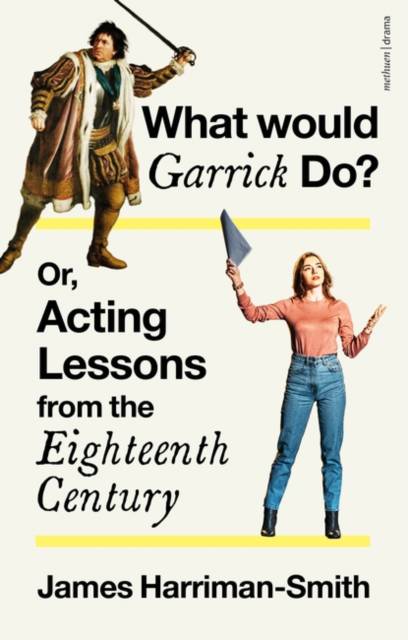
- Afhalen na 1 uur in een winkel met voorraad
- Gratis thuislevering in België vanaf € 30
- Ruim aanbod met 7 miljoen producten
- Afhalen na 1 uur in een winkel met voorraad
- Gratis thuislevering in België vanaf € 30
- Ruim aanbod met 7 miljoen producten
Zoeken
What Would Garrick Do? Or, Acting Lessons from the Eighteenth Century
James Harriman-Smith
Hardcover | Engels
€ 169,95
+ 339 punten
Uitvoering
Omschrijving
The stage of the 1700s established a star culture with the emergence of acting celebrities such as David Garrick, Susannah Cibber and Sarah Siddons. It placed Shakespeare at the heart of the classical repertoire and offered unprecedented opportunities to female actors. This book demonstrates how an understanding of the practice and theories circulating at the time can generate new ways of studying and performing plays of all kinds today.
Offering theatre professionals a model for active engagement with stage history, this book provides stage historians with an approach to past performance practice that is centred on process and preparation rather than product.
Initially, this book vividly introduces readers to the 18th-century stage and the ideas that governed it through a study of the vast amount of writing about acting that appeared at the time, including letters, diaries, treatises and anthologies. The author then presents a series of exercises developed in collaboration with professional actors and directors informed by this literature. These exercises can be employed singly or combined into an iterative rehearsal process; they are also open to further adaptation and analysis as part of a work that treats theatre writers of the past as potential collaborators for those interested in theatre today.
A truly unique offering, What would Garrick Do? Or, Acting Lessons from the Eighteenth Centuryoffers a fascinating deep-dive into this important time in theatre history to illuminate practices and processes today.
Offering theatre professionals a model for active engagement with stage history, this book provides stage historians with an approach to past performance practice that is centred on process and preparation rather than product.
Initially, this book vividly introduces readers to the 18th-century stage and the ideas that governed it through a study of the vast amount of writing about acting that appeared at the time, including letters, diaries, treatises and anthologies. The author then presents a series of exercises developed in collaboration with professional actors and directors informed by this literature. These exercises can be employed singly or combined into an iterative rehearsal process; they are also open to further adaptation and analysis as part of a work that treats theatre writers of the past as potential collaborators for those interested in theatre today.
A truly unique offering, What would Garrick Do? Or, Acting Lessons from the Eighteenth Centuryoffers a fascinating deep-dive into this important time in theatre history to illuminate practices and processes today.
Specificaties
Betrokkenen
- Auteur(s):
- Uitgeverij:
Inhoud
- Aantal bladzijden:
- 256
- Taal:
- Engels
Eigenschappen
- Productcode (EAN):
- 9781350171954
- Verschijningsdatum:
- 25/01/2024
- Uitvoering:
- Hardcover
- Formaat:
- Genaaid
- Afmetingen:
- 140 mm x 216 mm
- Gewicht:
- 444 g

Alleen bij Standaard Boekhandel
+ 339 punten op je klantenkaart van Standaard Boekhandel
Beoordelingen
We publiceren alleen reviews die voldoen aan de voorwaarden voor reviews. Bekijk onze voorwaarden voor reviews.








